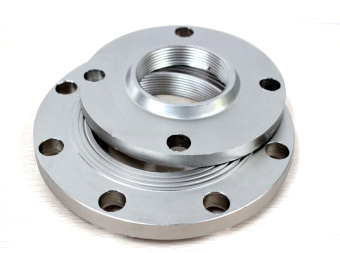
Flanged connection is a valve body with flanges at both ends, corresponding to the flanges on the pipeline, by bolting the flange installed in the pipeline. Flanged connection is the most commonly used type of valve connection. Flanges have convex (RF), plane (FF), convex and concave (MF) and other points. According to the shape of the joint surface, it can be divided into the following kinds:
(1) smooth type: for the valve with low pressure. Processing is more convenient;
(2) concave and convex type: high working pressure, can use the hard gasket;
(3) tenon groove type: gasket with large plastic deformation can be used widely in corrosive media, and the sealing effect is better;
(4) trapezoidal groove type: oval metal ring as gasket, used in the valve working pressure ≥64 kg/cm2, or high temperature valve;
(5) Lens type: the gasket is in the shape of a lens, made of metal. Used for high pressure valves with working pressure ≥ 100kg/cm2, or high temperature valves;
(6) O-ring type: this is a new form of flange connection, it is with the emergence of all kinds of rubber O-ring, and developed, it is more reliable in the sealing effect than the general flat gasket.
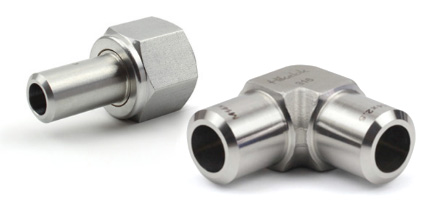
(1) Butt-welding connection: both ends of the valve body are processed into butt-welding groove according to the requirements of butt welding, corresponding to the pipe welding groove, and fixed on the pipeline through welding.
(2) socket welding connection: both ends of the valve body are processed according to the requirements of socket welding and connected with the pipeline through socket welding.
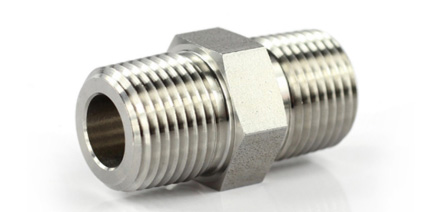
Threaded connection is a convenient method of connection and is often used for small valves. The valve body is processed according to the standard thread, and there are two kinds of internal thread and external thread. Corresponding to the thread on the pipe. Threaded connection is divided into two situations:
(1) direct sealing: internal and external threads directly play a sealing role. In order to ensure that the joint does not leak, often with lead oil, hemp and PTFE raw material filling belt; Among them, PTFE raw material belt is widely used. This material has good corrosion resistance, excellent sealing effect, easy to use and keep, when disassembly, it can be completely removed, because it is a layer of non-viscous film, much better than lead oil, hemp.
(2) indirect sealing: the force of screw tightening is transmitted to the gasket between the two planes, so that the gasket plays a sealing role.
There are five types of commonly used threads:
(1) Metric common thread;
(2) Inch common thread;
(3) Thread sealing pipe thread;
(4) non-threaded sealing pipe thread;
(5) American standard pipe threads.
The general introduction is as follows:
① International standard ISO228/1, DIN259, for internal and external parallel thread, code G or PF(BSP.F);
② German standard ISO7/1, DIN2999, BS21, for the outer tooth cone, inner tooth parallel thread, code BSP.P or RP/PS;
③ British standard ISO7/1, BS21, internal and external taper thread, code PT or BSP.TR or RC;
④ American standard ANSI B21, internal and external taper thread, code NPT G(PF), RP(PS), RC (PT) tooth Angle are 55°, NPT tooth Angle is 60°BSP.F, BSP.P and BSP.TR collectively referred to as BSP teeth.
There are five types of standard pipe threads in the United States: NPT for general use, NPSC for straight internal pipe threads for fittings, NPTR for guide rod connections, NPSM for straight pipe threads for mechanical connections (free fit mechanical connections), and NPSL for loose fit mechanical connections with locking nuts. It belongs to non-threaded sealed pipe thread (N: American national standard; P: pipe; T: Taper)
4 .Taper connection
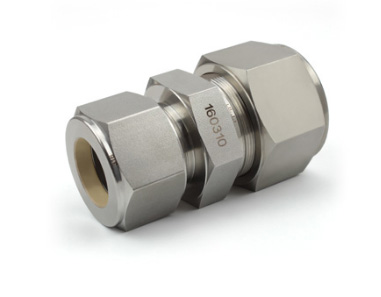
The connection and sealing principle of the sleeve is that when the nut is tightened, the sleeve is under pressure, so that the edge bit into the outer wall of the pipe, and the outer cone of the sleeve is tightly closed with the cone of the joint body under pressure, so it can reliably prevent leakage. Such as instrumentation valves. The advantages of this form of connection are:
(1) Small volume, light weight, simple structure, easy disassembly and assembly;
(2) strong relay, wide range of use, can withstand high pressure (1000 kg/square centimeter), high temperature (650℃) and impact vibration;
(3) can choose a variety of materials, suitable for corrosion prevention;
(4) the machining accuracy is not high;
(5) easy to install at high altitude.
5. Clamp connection
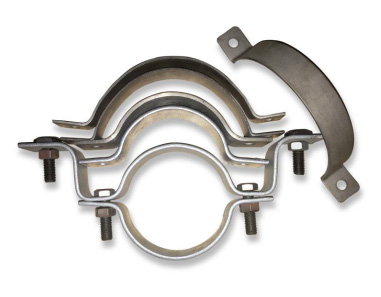
It is a quick connection method that requires only two bolts and is suitable for low-pressure valves that are often removed.
Post time: Feb-22-2022